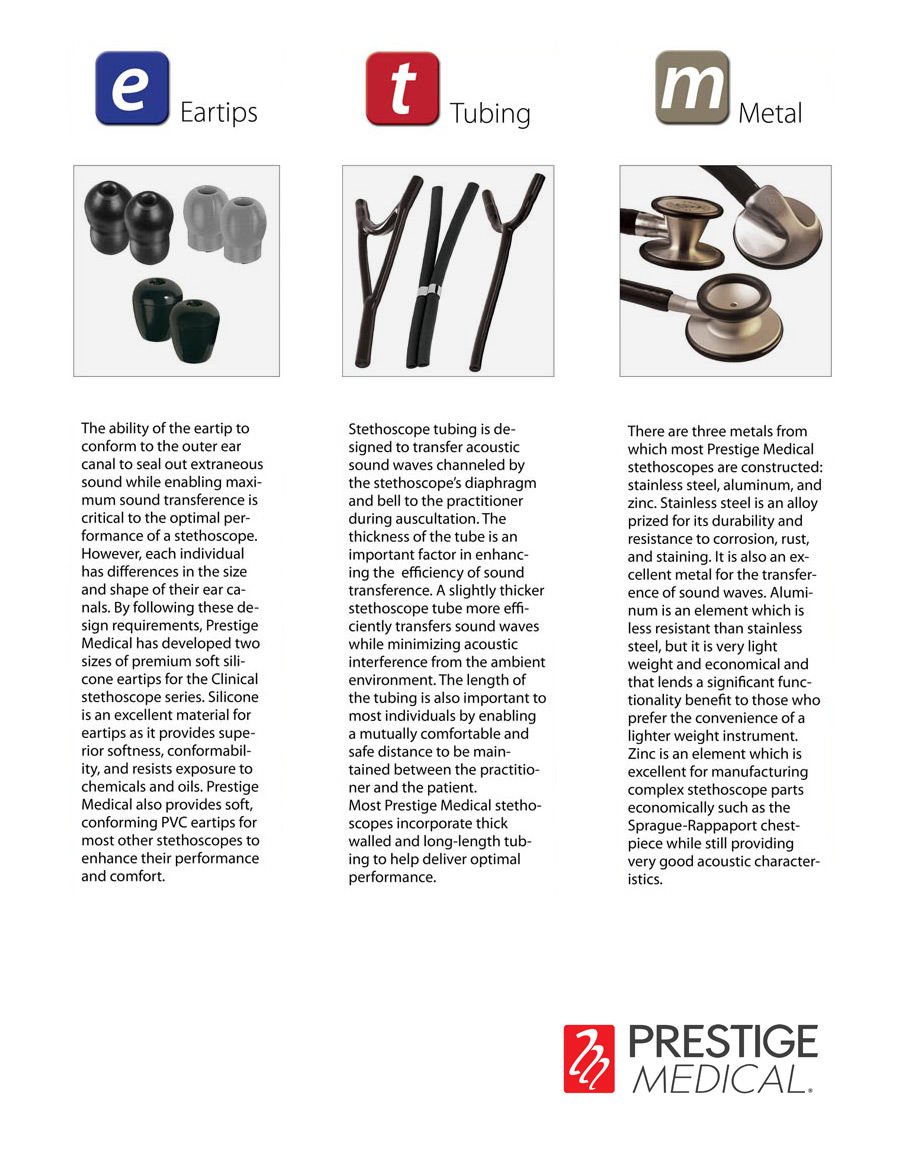When preparing for EMT school, there are a few essential tools you simply can’t do without. One of the most important is the stethoscope, a fundamental instrument in emergency medicine that allows you to assess and monitor patients quickly and accurately. In this post, we'll break down the anatomy of a stethoscope, how material quality affects its performance, and why EMT students should look for an affordable, reliable option as they begin their training.
Why is a quality stethoscope important for EMT students?
A stethoscope is a vital tool for EMTs to assess patients' heart, lung, and other body sounds. A high-quality stethoscope ensures clear and accurate sound transmission, allowing students to make precise diagnoses and provide optimal care.
Anatomy of a Stethoscope
A stethoscope is a simple yet powerful tool that consists of many components. The main 4 are:
- Chestpiece: This is the metal part with a diaphragm (used to detect higher-frequency sounds like heartbeats) and sometimes a bell (for lower-frequency sounds like certain lung issues).
- Diaphragm: The flat, circular part of the chestpiece that captures sound from the body when pressed against the skin.
- Tubing: The flexible rubber or PVC tube that transmits sound from the chestpiece to the ears. The quality and length of tubing can influence sound clarity.
- Headset: The metal part that holds the earpieces, allowing the sound to reach your ears.

Each part of the stethoscope plays a critical role in providing clear, accurate sound, which is vital when diagnosing a patient in an emergency setting.
How Materials Impact Stethoscope Quality
The materials used in a stethoscope can significantly impact its durability and sound quality. For example:
- Chestpiece material: Higher-end stethoscopes often use stainless steel or titanium, which offer superior acoustics compared to cheaper aluminum models.
- Tubing: Flexible and thick tubing made of high-quality rubber or PVC ensures that sound travels effectively from the chestpiece to the earpieces. Lower-quality tubing may degrade faster and allow for sound distortion over time.
- Earpieces: Comfortable, well-sealed earpieces are essential for reducing external noise and ensuring a snug fit. Inexpensive models may have less comfortable earpieces, which can affect the quality of sound transmission.

While it’s not always necessary to have the highest-grade materials for training, it’s important to select a stethoscope that balances durability with sound quality for accurate assessments.
Types of Stethoscopes
There are several types of stethoscopes available, each designed to suit specific purposes. Here's a look at the most common ones you'll encounter:
- Acoustic Stethoscopes: These are the traditional stethoscopes used by most EMTs and healthcare providers. They rely on sound traveling through the tubing to your ears and are ideal for basic assessments of heart, lung, and bowel sounds.
- Electronic Stethoscopes: These amplify sound using electronic components, making it easier to hear faint sounds that might be difficult to detect with a standard acoustic stethoscope. While beneficial in certain settings, they tend to be more expensive and are often overkill for EMT students.
- Cardiology Stethoscopes: Designed for specialists, these stethoscopes provide superior acoustic quality and are capable of picking up even the faintest heart murmurs. While excellent for precision, they tend to be on the higher end of the price spectrum and may not be necessary for students.
- Pediatric and Infant Stethoscopes: These have smaller chestpieces designed for use on pediatric patients, making them ideal if you expect to work in environments that deal with children frequently.
For EMT students, an acoustic stethoscope is usually the best option, as it provides the necessary sound quality without the higher price point of more advanced models.
High-End vs. Entry-Level Stethoscopes
When it comes to stethoscopes, there is a wide range of quality available in the market.
-
High-End Stethoscope: These can range from $100 to $300. They often come with dual head chestpieces, high-quality materials like stainless steel, and advanced acoustics, making them ideal for cardiologists or professionals needing precise auscultation.
Higher-end stethoscopes offer advanced features such as noise reduction technology, superior acoustics, and customizable options. While these features are beneficial for experienced healthcare professionals, they are not necessary for EMT students.
- Entry-Level Stethoscope: These are typically priced between $20 and $50. They may have simpler construction and materials, usually made of aluminum chestpieces, but are still more than adequate for EMT students. Entry-level models are durable enough for daily use and offer clear sound, which is essential when you're learning the basics of patient care.
Choosing the right stethoscope for your needs
For EMT students, a good quality stethoscope that falls within the entry-level price range is a practical choice. Look for a stethoscope that is durable, comfortable to wear, and provides clear sound transmission. It's essential to prioritize functionality and reliability over fancy features.
MedTech - Your One-Stop-Shop for EMT School Supplies
Ready to equip yourself for EMT school? Shop for stethoscopes and more essential tools on our website ShopMTProducts.com!

